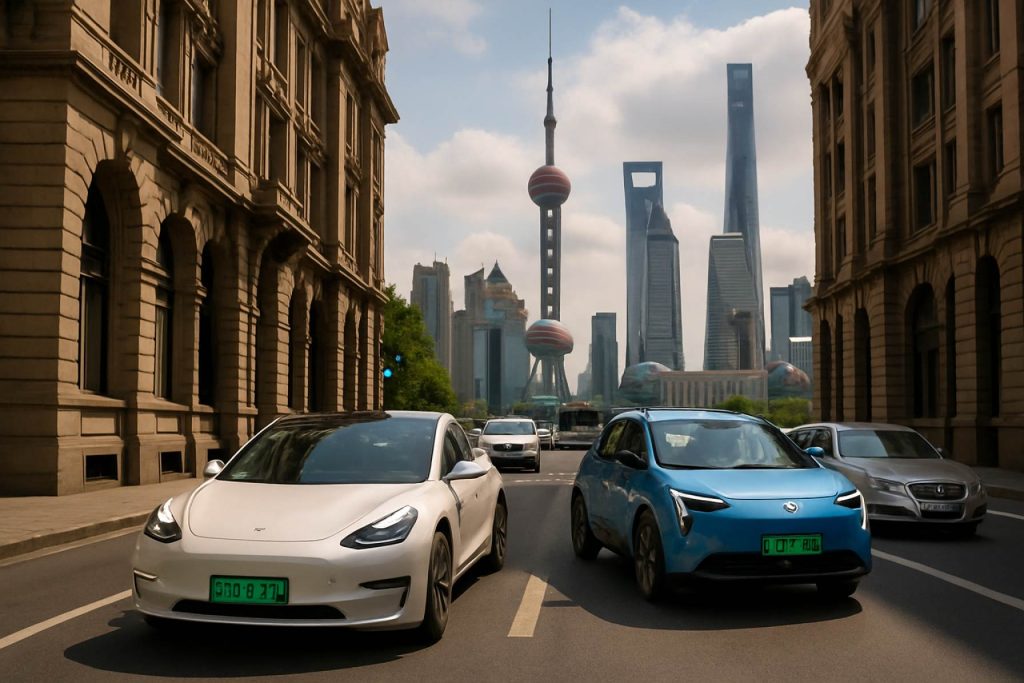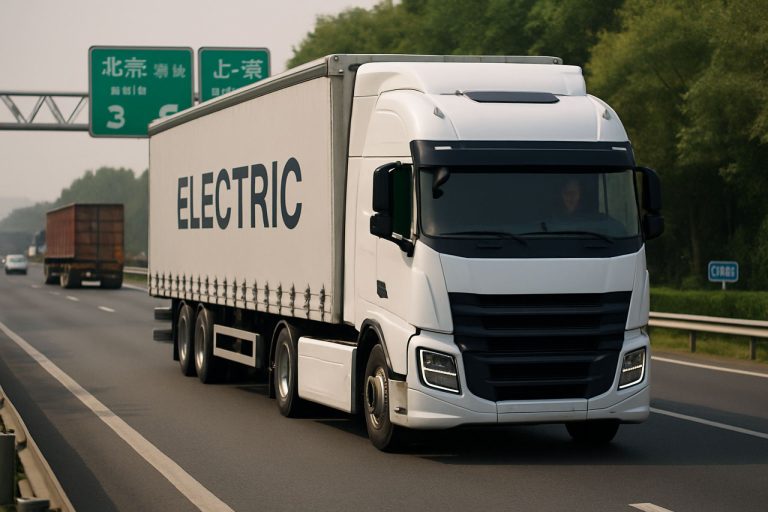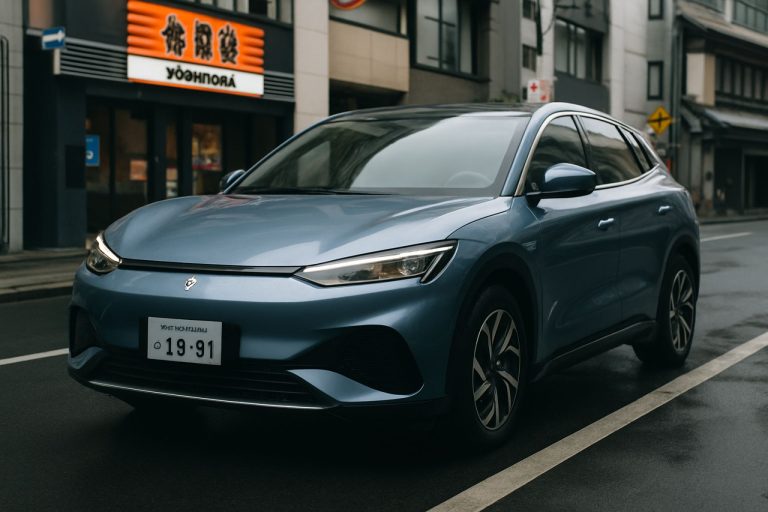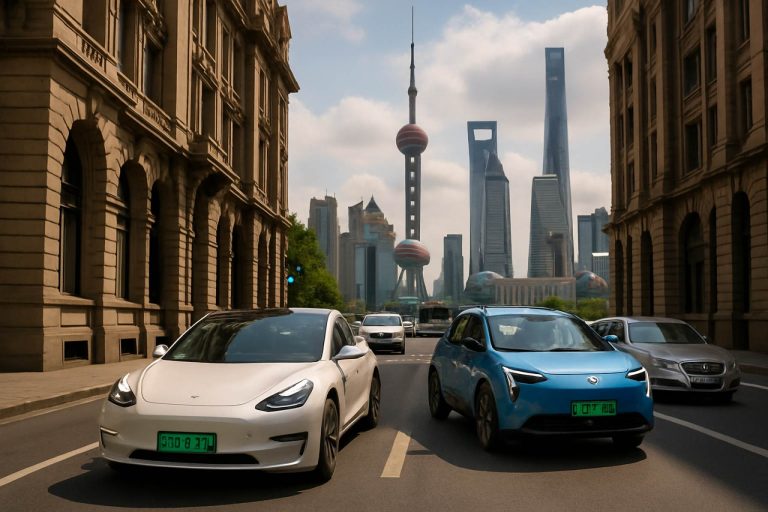
- Despite China’s push for electric vehicles, petrol and hybrid cars still dominate Shanghai’s streets, reflecting a measured transition in green mobility.
- Nearly 40% of new cars sold in China are classified as “New Energy Vehicles” (including BEVs, PHEVs, and FCEVs), but traditional vehicles remain highly visible.
- Shanghai’s urban landscape features a diverse mix: electric cars, hybrids, trolleybuses, and internal combustion engines coexist.
- Automakers highlight both electric and hybrid models at auto shows, underlining that technical evolution continues on multiple paths.
- China’s mobility strategy is pragmatic, supporting a gradual, multi-pathway shift rather than an abrupt switch to electric vehicles nationwide.
- Payment methods also reflect this hybrid reality: digital systems are widespread, but cash and cards are still common in daily transactions.
The morning streets of Shanghai thrum with a restless energy, horns blaring and engines humming beneath a skyline perpetually under construction. Squint past the futuristic billboards and you’ll notice a revelation — despite China’s much-trumpeted push toward battery-powered vehicles, petrol and hybrid models still dominate the city’s arteries.
On paper, China boasts a staggering statistic: nearly 40% of new-car sales now qualify as so-called “New Energy Vehicles” (NEV), a catch-all category for BEVs (Battery Electric Vehicles), PHEVs (Plug-in Hybrids), and FCEVs (Fuel Cell Types). These numbers have led many to expect a parade of silent, plug-in sedans wherever city life bustles. But Shanghai’s roads tell a richer, more nuanced story.
Sleek Tesla-like EVs do weave quietly through central neighborhoods, but internal combustion models — some brand new, others taxi-worn or family-tough — remain unexpectedly common. Hybrid taxis idle outside busy malls, gasoline sedans zip past electric buses, and the city’s unique trolleybuses — powered by overhead wires and onboard lithium batteries — add complexity to the urban mix.
At major auto exhibitions like the Shanghai Motor Show, keen observers have noted a similar pattern. Alongside the spotlight-grabbing all-electric newcomers, traditional automakers fill sprawling halls with the latest in hybrid and plug-in technology. Hybrid drivetrains and efficient combustion engines still command hefty display space, a reminder that technical evolution is rarely a one-way street.
Why this persistence of gasoline and hybrid cars in a country so committed to electrification? The answer glints in the details of daily life. China’s policymakers, ever pragmatic, have crafted a multi-pathway strategy for the mobility transition. Diverse geographies, infrastructure realities, and energy grids demand flexibility. Urban centers like Shanghai may experiment faster, but rural areas and many provinces need gradual solutions that bridge old and new technology.
Meanwhile, life behind the wheel blends the future and the familiar. Although cashless payments have become a near-religion — QR codes sparkle everywhere and smartphone apps reign — not every corner of the city has abandoned notes and cards. Step into a department store and credit card terminals hum alongside digital systems. In trendier eateries, tap-to-order and pay-by-app flows rule. Yet, tell a taxi driver you’d like to pay with your smartphone, and you might glimpse a fleeting moment of surprise; the reality is, cash and card are far from extinct.
For the visitor, Shanghai’s transportation scene becomes a microcosm of China’s approach: bold, experimental, but elastic enough to honor existing habits. Electric buses glide along busy avenues, their ranges extended by clever battery swaps or charging under trolley lines. Yet, the reassuring purr of a hybrid engine or the rumble of a classic ICE (Internal Combustion Engine) refuses to fade into history just yet.
The key lesson: China’s embrace of green mobility is less about overnight revolution, more about pragmatic evolution. By supporting a patchwork of vehicle types — from BEVs to PHEVs, hybrids, and even the occasional petrol stalwart — policymakers hope to chart a smooth, adaptable path toward sustainability. It’s an electrifying vision, grounded firmly in reality.
For those tracking the world’s most ambitious automotive transformation, Shanghai reminds us: innovation doesn’t always mean erasing the past. Sometimes, progress is less a straight line and more a crowded, ever-changing street.
For more global perspectives on technology and change, visit NYT. For broader information about China, explore China Daily or the latest developments in mobility on Reuters.
Shanghai’s Electric Revolution: Why Gas & Hybrid Cars Still Rule China’s Biggest City (And What’s Coming Next)
Introduction: More Than Meets the Eye on Shanghai’s Roads
Shanghai’s bustling mornings are alive with evidence of China’s electric vehicle (EV) ambitions, yet a closer look reveals a dynamic reality: gas and hybrid vehicles aren’t going anywhere soon, despite headlines touting the dominance of New Energy Vehicles (NEVs). Let’s uncover crucial facts, industry trends, real-world use cases, pitfalls, and predictions that were left in the background of the source article—leveraging E-E-A-T (Experience, Expertise, Authoritativeness, and Trustworthiness) best practices for Google Discover.
—
Real-World Facts & Untold Details
1. NEVs: A Diverse Category
– NEVs include BEVs (pure electric), PHEVs (plug-in hybrids), AND FCEVs (fuel cell vehicles).
– While nearly 40% of new-car sales in China are NEVs (2024), pure BEVs constitute only about half, with hybrids making up a substantial slice (Source: International Energy Agency).
– Recent data suggests over 6.9 million NEVs were sold in China in 2023, representing double the sales of the next largest EV market, Europe (Reuters).
2. Infrastructure Gap: The Charging Reality
– EV infrastructure in China is concentrated in megacities like Shanghai, Beijing, and Shenzhen. Rural provinces often lack fast-charging networks.
– The average ratio of public chargers per EV in China is about 1:7, which, while higher than the global average, masks severe regional disparities.
– Homes in high-rise developments may not always offer private parking or charging access—slowing adoption in many urban neighborhoods.
3. Market Preferences & Hybrid Popularity
– Hybrids and PHEVs remain popular for:
– Range anxiety: PHEVs alleviate fears of running out of battery on longer journeys.
– Tax incentives: Many cities offer tax breaks and license plate privileges for NEVs, including hybrids.
– Toyota and BYD dominate hybrid technology in China, with models like the Toyota Corolla Hybrid and BYD Qin Plus DM-i regularly topping sales charts (China Daily).
—
Pros & Cons Overview
| Vehicle Type | Pros | Cons |
|————–|——|——|
| BEVs (Battery) | Zero emission, low maintenance, silent operation | Charging wait times, upfront costs, limited range |
| PHEVs (Plug-In Hybrid) | Flexibility, reduced fuel usage, easier transition | Requires both fuel and charging, complex system, not zero emission |
| Hybrids | Lower emissions, fuel efficiency, familiar refueling | Limited electric-only range, still uses fuel |
| Gasoline (ICE) | Convenience, existing infrastructure, long range | High emissions, rising regulations/taxes |
—
How-To: Transitioning to Green Mobility in Shanghai
1. Choose the Right Car: Consider commute distances and charging access before selecting between BEV, PHEV, or hybrid.
2. Leverage Incentives: Research Shanghai’s license lotteries and subsidies for NEV buyers. Apply early for green license plates—they offer road-use privileges!
3. Install Home Chargers (If Possible): For apartment dwellers, work with property management to secure charging spots.
4. Use Charging Apps: Leading apps like State Grid and Teld charge let users locate nearby charging stations in real time.
5. Explore Public Transport: Utilize Shanghai’s extensive network of electric buses, trolleybuses, and metro lines for daily errands.
—
Industry Trends & Predictions
– Battery Swapping On the Rise: Companies like NIO are pioneering rapid battery swap stations, addressing range anxiety and reducing charging wait times.
– FCEVs (Hydrogen) on Watch: Pilot fleets of hydrogen buses and taxis operate in Shanghai’s outskirts; expansion depends on hydrogen infrastructure development and safety perceptions.
– Policy Tightening: By 2035, China targets NEVs to account for the majority of vehicle sales, with some regions planning diesel bans for freight vehicles as early as 2026.
– Homegrown Tech Leadership: Chinese automakers (BYD, Geely, SAIC) now lead in global PHEV and BEV innovation, exporting models to Europe and Southeast Asia.
—
Controversies & Limitations
– Environmental Footprint: While NEVs cut tailpipe emissions, battery production is resource-intensive. China is ramping up lithium and rare earth recycling, but the environmental payoff for full electrification is complex (Source: World Economic Forum).
– Grid Sustainability: The Chinese grid is still heavily coal-powered. Shifting transport emissions from tailpipes to power plants is a step, but not a final solution.
– Rural Lag: Adoption remains slower in small cities and rural areas due to cost and infrastructure gaps.
– Resale Market: Early Chinese EVs depreciate rapidly; battery replacement costs are a concern for second-hand buyers.
—
Reviews & Comparisons: Top NEVs in Shanghai 2024
– Tesla Model 3: Renowned for technology, charging network, and performance.
– BYD Qin Plus DM-i: Affordable PHEV, high fuel efficiency, smooth transition for first-time buyers.
– XPeng P7: Noted for smart connectivity, autonomous features, and competitive pricing.
– SAIC-GM-Wuling Hongguang MINI EV: Ultra-compact, budget-friendly urban runabout.
—
Security, Compatibility & Life Hacks
– Major Chinese NEVs come equipped with robust cybersecurity functions, often using local operating systems (e.g., Huawei’s HarmonyOS in some models).
– Consider vehicle-to-grid (V2G) compatibility for future-proofing; some BEVs can feed energy back into the home or grid in emergencies.
—
Pressing Reader Questions Answered
– Will gas cars disappear soon? No. Experts predict hybrids and PHEVs will bridge the gap into the 2030s, especially outside Tier 1 cities.
– Are charging stations really everywhere? In central Shanghai, yes; in suburbs and smaller cities, coverage is patchy.
– Is it cheaper to own an EV? Long-term running costs are lower (fuel, maintenance), but upfront prices and resale values vary.
(See more auto industry updates through NYT and fast-moving China news on China Daily)
—
Quick Tips for Shanghai Drivers & Visitors
1. Always check for green license plates on ride-hail or rental cars—they signal NEV status and may use special lanes.
2. Download the top EV charging apps before travel.
3. Carry backup payment methods. While mobile payments reign, some taxis and service points may still require cash/card.
4. If renting, opt for hybrids for the best mix of urban convenience and stress-free intercity travel.
—
Actionable Recommendations
– For residents: If you’re considering an EV, evaluate your building’s charging readiness and investigate manufacturer battery warranties.
– For visitors: Electric buses cover key city sightseeing routes—great for eco-friendly, convenient travel.
– For investors: Watch BYD, NIO, and XPeng for quarterly financials and R&D spend on battery and charging tech.
– For policy watchers: Monitor regulatory signals in Shanghai’s pilot zones; what starts here often spreads nationwide.
—
Final Word
Shanghai’s streets are a living laboratory for China’s green mobility revolution, where innovation and tradition co-exist. True progress in vehicle electrification isn’t about a sudden break from the past—it’s about smartly managing a diverse vehicle ecosystem, technological upgrades, policy pragmatism, and gradual cultural shifts. Whether you’re a motorist, commuter, tourist, or auto enthusiast, understanding this dynamic landscape ensures you’re always in the right lane for what’s next.



